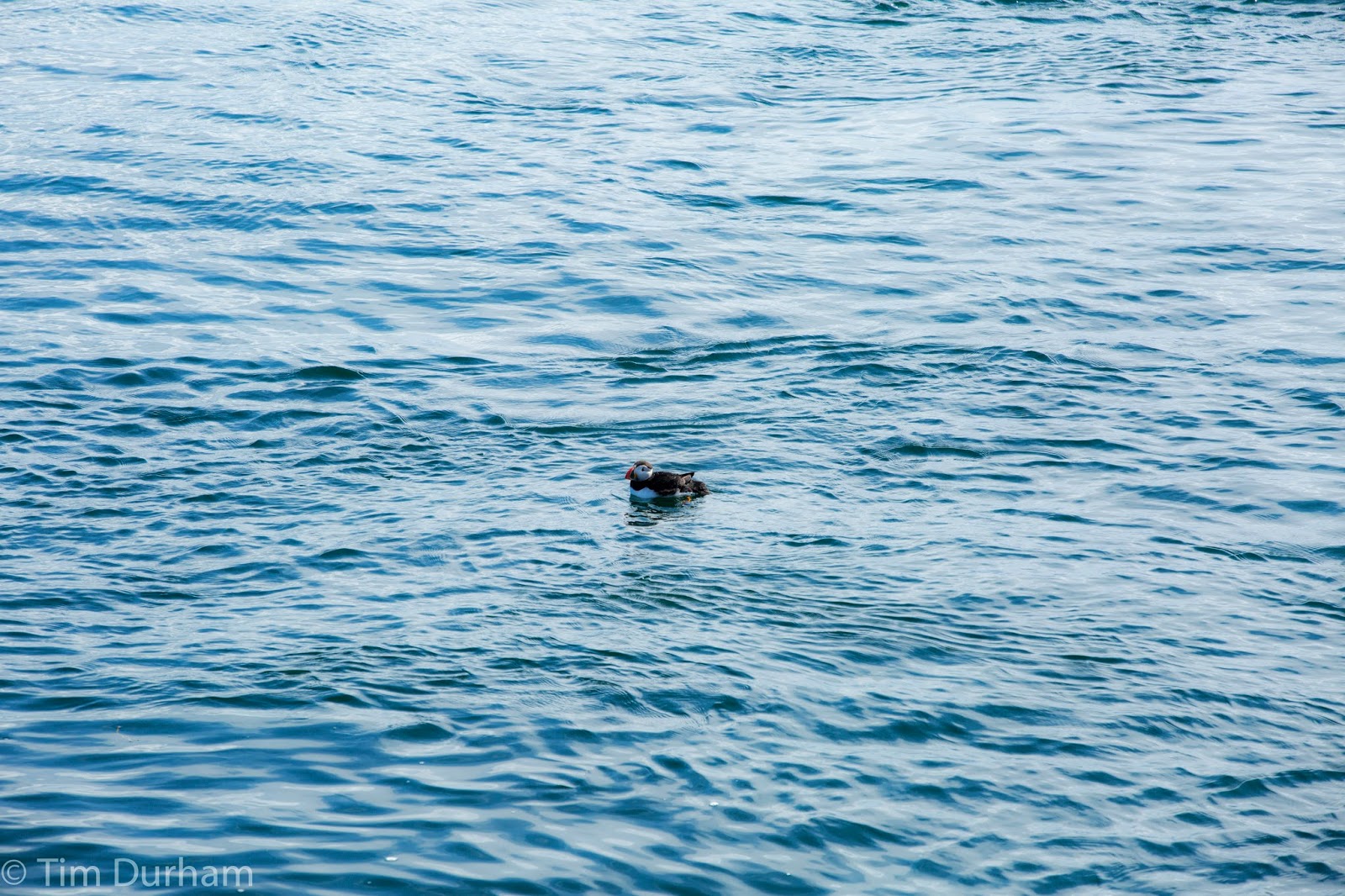Our ride for the day:
The Saerun - Das Boot
Bird hunting along the rocky cliffs...
This cliff face was just full of nesting shags.
As long as I was in Iceland, I wanted to shoot some birds. The pic above is what all those folks with camera-phones and inexpensive point-n-shoots will probably get to look at upon their return home. Interesting? Yep. Pretty? Yep, again. But I wanted to be able to see them a bit more up close and personal. So...
...I packed my camera gear and lugged it most of the way across the world. I was really glad that I made the effort, because I got to see those beautiful avians mostly "up close and personal"... Hope you enjoy these bird shots as much as I do.
First, the Shags:
The European shag is one of the deepest divers among the cormorant family. Shags have been shown to dive to around 45 meters (148 ft). When they dive, they jump out of the water first to give extra oomph to the dive. European shags are preponderantly benthic feeders**, i.e. they find their prey on the sea bottom. They will eat a wide range of fish but their commonest prey is the sand eel.
** Like politicians.
The Good News - It breeds on coasts, nesting on rocky ledges or in crevices or small caves.
The Bad News - Their nests are terrible looking (and smelling) heaps of rotting seaweed or twigs cemented together by the bird's own guano.
This next bird has guano (aka: poop, birdshit, etc) all over it's back from those damned upstairs neighbors who just don't seem to care.
Attention paparazzi aboard the Saerun: No pics of my chick please, I'm trying to get it down for a nap!
This chick was born naked. No feathers, no down, nada. It's taken (probably) about two or three months for it to get this fuzzy and fluffy, and is almost ready for fledging.Next, The Kittiwakes:
Black Legged Kittiwake
This is a pretty little bird although, like the shags, it's not overly mindful about sanitation around the house... And like the shags, these birds build their nests on rocky cliffs over the water out of... yep. S.O.S. Seaweed, twigs and grass, and... bird cr@p. Same Old Shit, Different Bird. |
| Time for a Kittiwake Siesta Well, of course it Could be the odor... |
Apartment living, Icelandic Kittiwake Style
Everyone wants to take a little afternoon nap... but there's always one old bird from the top floor that wants to gossip. I wonder... what did those birds use to paint the arrow pointing out the loudmouth? My guess: home-made "building mortar "?
Third, the fulmar:
Northern fulmar (Fulmarus glacialis)

Fourth, The Puffins:
 |
| 55 mph, flat-out, just above the surface in 'ground effect'. |
The range of the Puffin includes the whole North Atlantic, including Iceland which has one of the world's largest colonies. They lead a rather solitary life during the fall and all winter, living alone on the surface of the North Atlantic just bobbing around, swimming, feasting, and sleeping. They're excellent swimmers, and use their stubby little wings (a "compromise sized wing" for swimming or flying) to dive down up to 60 meters in search of herring or sand eels (Mmmm sand eels, their fave). Once airbourne, if flying, the little speedsters are fast, 55mph, but not terribly maneuverable. While at sea, they usually "land" by crashing head-long into a wave crest. While on land, they usually attempt a belly flop, but end up... well, End-Over-End.
Thinking back, if I'd had to crash land somewhere after Every take-off... I probably wouldn't have become a pilot.
Puffins land on North Atlantic seacoasts and islands to form breeding colonies each spring and summer, where they live in burrows. Suites, actually. Many have two chambers, one for pooping, and another lined with grass and feathers for nesting and breeding, incubating their single egg, and hopefully, raising their single chick.
Both parents take turns incubating it. When a chick hatches, its parents take turns feeding it by carrying small fish (and Sand eels - Yum!) back to the nest in their relatively spacious bills. Once they capture a small herring or eel, they hold it against their upper beak with their tongue, thus freeing the lower hinged part of the beak to go right ahead collecting further foodstuffs for their little "puffling". No, really. That's what the chicks are called. Pufflings.
Puffin couples often reunite at the same burrow site each year. It is unclear how these birds navigate back to their home grounds. They may use visual reference points, smells, sounds, the Earth's magnetic fields—or perhaps even the stars.
 |
| Bath time! |
 |
| Ahh, I always feel so much better after a cold bath! |
And now, for something to eat:
Oh, look. The waiter has just placed our order.
A brief wait while our order was "processed", and voilà...
Dinner's almost ready!
Dinner's almost ready!
Dump it onto the table boys and girls, the "crew" is becoming restless...
Bounty de la Mer
Who wants to be first?
Surely that cute little 16 y/o girl isn't gonna gut this thing! Eeewww!
Then one-half of a second and two flicks of a sharp blade, and
This is the result. Fresh. Seafood. With a teeny bit of sal from la Mer....
I'm just reaching for it... reach..
Who owns that red glove!?
Winnie ! ! !
Okay, just for that... I'm going to "arrange" to have you lowered down the throat of a volcano! This time, Indiana Jones won't be there to stop me! Bwaahahahahaha!
No shit, folks. Tomorrow, we're going down into an (I hope) extinct volcano.
Stay tuned...
and good night for now.
http://video.nationalgeographic.com/video/puffin_atlantic_iceland























No comments:
Post a Comment